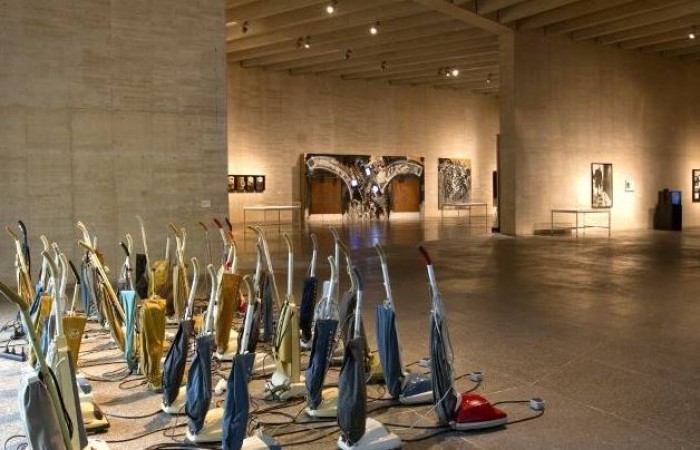
Introduction
Fluxus was an influential interdisciplinary art movement that emerged in the 1960s. It brought together artists from various backgrounds and art forms, creating a platform for experimentation and collaboration. This article aims to explore the essence of Fluxus, its key characteristics, notable artists, and the lasting impact it has had on the art world.
What is Fluxus?
Fluxus can be described as an avant-garde art movement that emerged in the 1960s. It sought to break down traditional boundaries between art forms and encouraged artists to explore new ways of creating and experiencing art. Fluxus challenged the conventional notions of art and embraced a more inclusive and democratic approach to creativity.
Origins of Fluxus
Fluxus originated in the early 1960s, primarily in New York City. It was influenced by earlier movements such as Dada and Surrealism, which also aimed to challenge established norms in art. The movement gained momentum through the efforts of artists such as George Maciunas, who played a significant role in organizing Fluxus events and exhibitions.
The Key Principles of Fluxus
Fluxus was guided by a set of key principles that shaped its artistic endeavors. These principles included:
1. Interdisciplinarity
Fluxus encouraged the integration of different artistic disciplines, including visual arts, music, poetry, performance, and theater. It aimed to blur the boundaries between these forms and create a more holistic artistic experience.
2. Anti-Art and Anti-Commercialism
Fluxus rejected the commercialization of art and sought to distance itself from traditional art market mechanisms. Artists often created works using everyday objects, embracing simplicity and accessibility over the pursuit of profit or exclusivity.
3. Fluxus Scores
Fluxus scores were instructions or sets of guidelines that artists used to create their works. These scores were often open-ended and allowed for interpretation and improvisation, emphasizing the process rather than the final outcome.
The Blending of Artistic Mediums
Fluxus artists explored the fusion of different artistic mediums to create unique and engaging works. Paintings, sculptures, installations, music, and poetry were combined, giving rise to dynamic and multisensory experiences. This blending of mediums challenged conventional categorizations and expanded the possibilities of artistic expression.
Performances as Art
Fluxus emphasized the role of performance as an art form. Artists created live events and happenings that engaged audiences directly, breaking down the barriers between the artist and the viewer. These performances often involved unconventional actions and interactions, encouraging active participation and redefining the boundaries of traditional theater or music.
Interactive Experiences in Fluxus
Interactive experiences were a hallmark of Fluxus. Artists sought to involve the audience in the creation and completion of their works. Through participatory installations and happenings, viewers became active participants, blurring the line between the observer and the creator. Fluxus aimed to democratize art, making it accessible to all and challenging the notion of art as an elite endeavor.
Notable Artists of Fluxus
Fluxus attracted a diverse range of artists from around the world. Some notable figures include:
Yoko Ono: Known for her experimental performances and conceptual works that pushed the boundaries of art and activism.
Nam June Paik: Considered the "Father of Video Art" and known for his groundbreaking use of television and technology in his artworks.
George Maciunas: A key organizer and promoter of Fluxus events, responsible for coining the term "Fluxus" itself.
John Cage: A renowned composer and philosopher whose experimental music compositions and ideas influenced many Fluxus artists.
Fluxus and its Impact on Contemporary Art
The influence of Fluxus extends beyond its initial period in the 1960s. Many of its principles and practices continue to resonate with contemporary artists today. Fluxus challenged the established art world and opened up new avenues of creativity, paving the way for future movements such as conceptual art, performance art, and participatory art. Its legacy can be seen in the works of artists across various disciplines who continue to explore interdisciplinary approaches and engage audiences in innovative ways.
Conclusion
Fluxus remains a significant movement in the history of art, known for its interdisciplinary nature, experimental spirit, and commitment to challenging established norms. By blending artistic mediums, embracing performance, and creating interactive experiences, Fluxus expanded the possibilities of art and influenced subsequent generations of artists. Its impact on contemporary art continues to inspire and shape the way we think about and engage with artistic expression.
Celebrating Malala Yousafzai's Birthday: A Tribute to Courage, Education, and Advocacy
The Glass Armonica: Unveiling the Enchanting Sounds of Glass Music